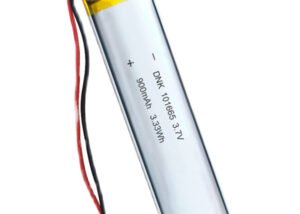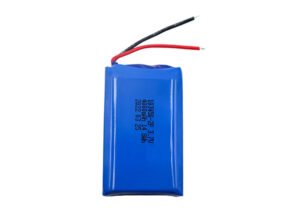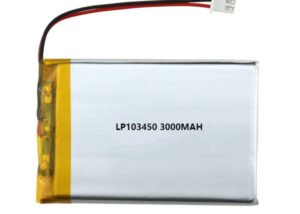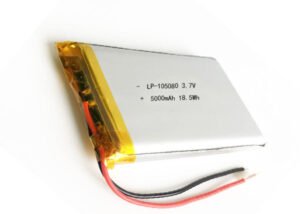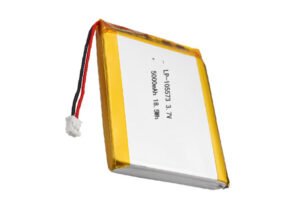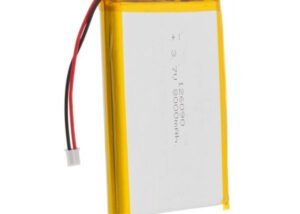LiPO Battery in Drone
Drones have become an increasingly popular tool for photography, videography, and even delivery services. As the technology behind drones continues to advance, so does the importance of the battery that powers it. One of the most commonly used batteries in drones is the LiPO battery.
In this article, we will discuss the importance of LiPO batteries in drone technology, how they work, and the advantages and disadvantages they offer. We will also explore the different types of LiPO batteries used in drones and what factors to consider when choosing the right one for your drone. Finally, we will provide tips for handling LiPO batteries in drones to ensure safety and proper usage.
LiPO battery stands for Lithium-Polymer battery. It is a rechargeable battery that is commonly used in drones and other electronic devices. LiPO batteries have become a popular choice for drone enthusiasts due to their high energy density, low weight, and ability to deliver high current.
How LiPO Battery Works?
LiPO batteries work by storing energy in a chemical form. The battery consists of an anode, a cathode, and an electrolyte. When the battery is charged, lithium ions move from the cathode to the anode, storing energy. When the battery is discharged, the lithium ions move back to the cathode, releasing energy.
Advantages and Disadvantages of LIPO Battery
Advantages:
- High energy density: LiPO batteries have a high energy density, which means they can store a lot of energy in a small package. This makes them ideal for use in drones, where weight is a crucial factor.
- Low weight: LiPO batteries are lightweight, which is important for drones as it allows for longer flight times and more efficient use of power.
- High discharge rate: LiPO batteries can deliver high discharge rates, which is important for drones that require a lot of power to fly and perform maneuvers.
Disadvantages:
- Risk of fire: LiPO batteries have a risk of catching fire if not handled properly. This is because they contain a flammable electrolyte and can overheat if overcharged or damaged.
- Short lifespan: LiPO batteries have a shorter lifespan compared to other types of batteries, meaning they need to be replaced more frequently.
- Require special handling: LiPO batteries require special handling and storage to ensure they remain safe and in good condition.
Types of LiPO Battery Used in Drones
LiPO batteries are essential for drone technology. They provide the power needed to fly, maneuver, and perform other functions. Without a reliable battery, drones would not be able to operate effectively.There are many different types of LiPO batteries used in drones. The most common types include:
- 1S: This is a single-cell LiPO battery that is commonly used in small drones.
- 2S: This is a two-cell LiPO battery that is used in medium-sized drones.
- 3S: This is a three-cell LiPO battery that is used in larger drones.
- 4S: This is a four-cell LiPO battery that is used in professional-grade drones.
When choosing a LiPO battery for your drone, there are several factors to consider:
- Capacity: The capacity of the battery determines how long the drone can fly. A higher capacity battery will provide longer flight times.
- Voltage: The voltage of the battery determines how much power the drone can deliver. A higher voltage battery will provide more power.
- Discharge rate: The discharge rate of the battery determines how much power the battery can deliver at once. A higher discharge rate battery will provide more power for maneuvers and other functions.
- Size and weight: The size and weight of the battery are important factors to consider as they can affect the overall weight and balance of the drone.
Tips for Handling LiPO Batteries in Drones
A. Safety Precautions When Using LiPO Batteries in Drones
- LiPO batteries can be dangerous if not handled properly. To ensure safety when using LiPO batteries in drones, it is important to follow these safety precautions:
- Always use a LiPO battery charger designed for LiPO batteries.
- Do not overcharge or over-discharge the battery.
- Do not puncture or damage the battery.
- Store the battery in a cool, dry place away from heat and direct sunlight.
- Use a LiPO battery bag or container when transporting or storing the battery.
Common Mistakes to Avoid
- To avoid damaging your LiPO battery or drone, it is important to avoid these common mistakes:
- Overcharging or over-discharging the battery
- Using a damaged or punctured battery
- Storing the battery in a hot or humid environment
- Using a charger that is not designed for LiPO batteries
In conclusion, LiPO batteries are an essential component of drone technology. They provide the power needed to fly, maneuver, and perform other functions. When choosing a LiPO battery for your drone, it is important to consider factors such as capacity, voltage, discharge rate, size, and weight. To ensure the safety and longevity of your LiPO battery, it is important to follow proper charging and storage techniques and avoid common mistakes. With the right LiPO battery and proper handling, you can enjoy longer flight times and more efficient use of power in your drone.


